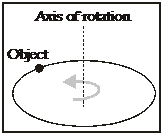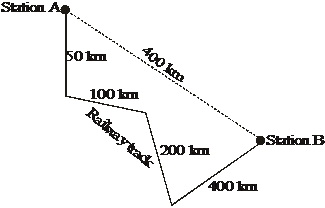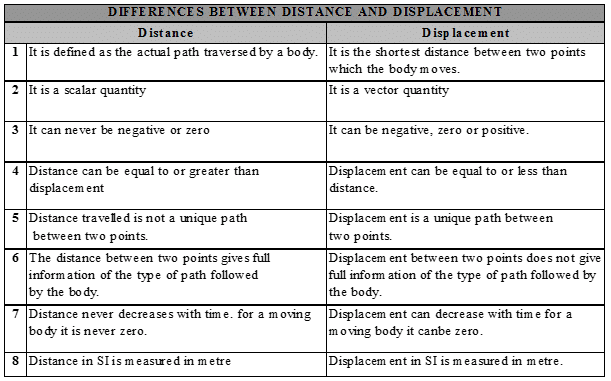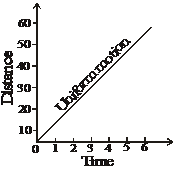Motion - Chapter Notes, Class 9, Science PDF Download
MOTION
If we look around us, we find that there are a number of objects which are in motion. An object is said to be in motion if it changes its position with the passage of time. In other words, the movement of an object is known as the motion of the object.
Now observe the following bodies or objects and we will be able to understand the meaning of the term "motion". Cars, cycles, motorcycles, scooters, buses, rickshaws, trucks etc. running on the road, Birds flying in the sky, Fish swimming in water. All these objects are in motion. Very small objects like atoms and molecules and very large objects like planets, stars and galaxies are in motion.
Thus, all objects ranging from the smallest atom to the largest galaxy are in continuous motion.
Types of Motion :
(A) Linear motion : A body has linear motion if it moves in a straight line or path.
Ex.
- The motion of a moving car on a straight road.
- The motion of a ball dropped from the roof of a building.
(B) Circular (or rotational) Motion : A body has circular motion if it moves around a fixed point.

A vertical passing through the fixed point around which the body moves is known as axis of rotation.
Ex.
- Motion of an electric fan.
- Motion of merry-go-round
- Motion of a spinning top.
(C) Vibratory motion :
A body has vibratory motion if it moves to and fro about a fixed point.
Ex.
- Motion of a pendulum of a wall clock.
- Motion of a simple pendulum.

MOTION IN LIVING AND NON-LIVING OBJECTS :
It is a common observation that all living objects, whether plants or animals can move in some way or the other. The motion in animals is more apparent than the motion in plants.
The motion in animals is called LOCOMOTION.
Plants also move but their motion is not apparent as they cannot move from place to place. Their motion takes place in parts. As a plant grows so does its roots and its leaves.
MECHANICS :
The branch of physics which deals with the motion of non-living objects in everyday life is called mechanics or Classical mechanics. It is of two types.
(i) Statics
(ii) Dynamics
STATICS : Statics deals with bodies at rest under the effect of different forces.
DYNAMICS : Dynamics deals with the bodies in motion. It is further of two types :
(i) Kinematics : Kinematics, which is derived from a Greek word kinema meaning motion,is a branch of Physics, which deals with the motion of a body without taking into account the cause of motion.
(ii) Dynamics proper : Dynamics proper, which is derived from a Greek word dyna meaning power it is a branch of Physics, which deals with the motion of bodies by taking into account the cause of motion (force).
Concept of a point object, Rest and motion
Point object : An extended object can be treated as a point object when the distance travelled by the object is much greater than its own size. "A point object is one, which has no linear dimensions but possesses mass."
Ex.
(i) Study of motion of a train travelling from Kota to New Delhi.
(ii) Revolution of earth around the sun for one complete revolution.
Rest :– A body is said to be at rest when its position does not change with time respect to the observer.
Motion :– A body is said to be in motion when its position changes with time respect to the observer.
Describe motion :
When a tree, is observed by an observer A sitting on a bench, the tree is at rest. This is because the position of the tree is not changing with respect to the observer A.

Now, When the same tree T is observed by an observer sitting in a superfast train moving with a velocity n, then the tree is moving with respect to the observer because the position of a tree is changing with respect to the observer B.
Rest and motion are relative terms : There is nothing like absolute rest. This means that an object can be at rest and also in motion at the same time i.e. all objects, which are stationary on earth, are said to be at rest with respect to each other, but with respect to the sun are making revolutions at 30 kmh–1. In order to study motion, therefore, we have to choose a fixed position or point with respect to which the motion has to be studied. Such a point or fixed position is called a reference point or the origin. In order to describe the motion of an object we need to keep in mind three things;
- The distance of the body from a reference point. This reference point is called the origin of the motion of the body.
- The direction of motion of the body.
- The time of motion.
Scalar and vector quantities
Scalar Quantity :– A quantity that has only magnitude no direction is called a scalar quantity.
Ex. mass, time, distance, speed, work, power, energy, charge, area, volume, density, pressure, potential, temperature etc.
Vector Quantity :– The physical quantity that has magnitude as well as direction are called vector quantity.
Ex. velocity, acceleration, force, displacement, momentum, weight, electric field etc.
Difference between scalar & vector quantities :

Distance and Displacement
Distance : The length of the actual path between the initial and the final position of a moving object in the given time interval is known as the distance travelled by the object.
Distance = Length of path I (ACB)
Distance is a scalar quantity.
Unit in SI system : metre (m)
in CGS system : centimetre (cm)
Large unit Kilometre (km)

Displacement:– The shortest distance between the initial position and the final position of a moving object in the given interval of time from initial to the final position of the object is known as the displacement of the object.
Displacement of an object may also be defined as the change in position of the object in a particular direction. That is,
Displacement of an object = Final position – Initial position of the object.
Displacement of an object may be zero but the distance travelled by the object in never zero.
Distance travelled by an object is either equal or greater than the magnitude of displacement of the object.
Displacement = Length of path II (AB) A to B,
displacement is vector quantities.
Units In SI system : metre (m)
In CGS system : centimetre (cm)
Ex. A train goes from station A to station B as shown in figure. Calculate

- the distance travelled by train and
- the magnitude of the displacement of the train on reaching station B.
Sol. (i) Distance travelled by the train = 50 100 200 400 = 750 km.
(ii) The magnitude of the displacement in going from station A to station B = 400 km.
Difference between Distance and Displacement

Uniform and non-uniform motion
A moving body may cover equal distances in equal intervals of time or different distances in equal intervals of time. On the basis of above assumption, the motion of a body can be classified as uniform motion and non-uniform motion.
Uniform motion:

When a body covers equal distances in equal intervals of time however small may be time intervals, the body is said to describe a uniform motion.

Example of uniform motion –
- An aeroplane flying at a speed of 600 km/h
- A train running at a speed of 120 km/h
- Light energy travelling at a speed of 3 × 108 m/s
- A spaceship moving at a speed of 100 km/s
Non-uniform motion:

When a body covers unequal distances in equal intervals of time, the body is said to be moving with a non-uniform motion.

Example of non-uniform motion –
- An aeroplane running on a runway before taking off.
- A freely falling stone under the action of gravity.
- An object thrown vertically upward.
- When the brakes are applied to a moving car.
FAQs on Motion - Chapter Notes, Class 9, Science
| 1. What is motion? |  |
| 2. What are the different types of motion? |  |
| 3. What is the difference between speed and velocity? |  |
| 4. What is acceleration? |  |
| 5. How can we calculate the average speed? |  |



















